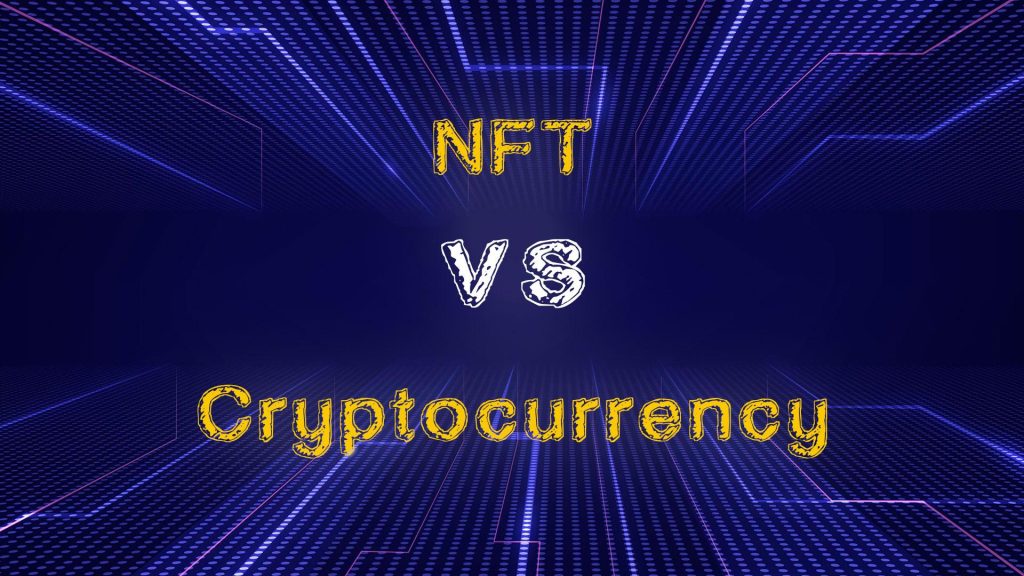With all the hype and enthusiasm surrounding the world of digital currencies and new terms like blockchains, cryptocurrencies and NFTs, you have definitely asked yourself this very fundamental question: What is the difference between NFTs and cryptocurrencies? So let’s tackle this by going over some basic concepts first.
What are cryptocurrencies?
A cryptocurrency is a decentralized digital money which is created and developed on a blockchain network, a decentralized inter-connected digital ledger which uses hashing functions to create new cryptocurrencies. Although fundamentally different from cryptography, hashing can be thought of as a one-way cryptography procedure in which any input is turned into a fixed-size astronomically enormous number called a Hash that cannot be reverse engineered by anyone. If you want to create new money on this network, your only option is to spend a ginormous amount of processing power to guess the Hash number. This guess is then checked and approved by each node on the network – a procedure called Proof of Work or PoW – and afterwards, a new block is created and added to the chain of older blocks and you get rewarded a piece of whatever the native currency of that blockchain is, and this whole process is called mining. So to oversimplify all this, a cryptocurrency is a decentralized type of money that’s created from the scratch by guessing big numbers and proving to everyone else that you have in fact guessed that number!
The decentralized nature of cryptocurrencies means they are not printed or governed by any central authority like a bank or government. The money is safe and secure not because of any central intervention or regulation, but because of how the blockchain technology works in the first place. A system that is programmed to be immune against hacking attempts, and to be as fast as possible at creating and transferring money. These are the major contributors to the success stories of the blockchain technology and cryptocurrency.
What are NFTs?
With the exponentially growing complexity, diversity and immensity of the digital world, the concept of digital ownership has never been more serious and tangible than it is now. If you spend thousands of dollars on a parcel of land in a metaverse environment, or win a unique trophy in an online game with hundreds of participants, what makes you the true owner of that property and keeps others from claiming or forging it?! NFTs or Non-Fungible Tokens are cryptographic digital assets stored on the blockchain network. Each NFT has a unique ID and metadata – the actual content and the description about the content described in the NFT’s contract stored on the blockchain – which makes it possible to trace the asset all the way back to its actual owner. To create an NFT, you need a blockchain network, a wallet and an NFT specialized marketplace to mint and tokenized your digital asset into an NFT. After that, you are the only person who owns that asset, whether it’s a piece of music, a painting, an in-game item like a sword or hat, or even an experience like being an spectator of a historic baseball game! You own your own experience, not just as a memory but as a digital asset.
Cryptocurrencies vs NFTs
There are many real-world items such as paintings, music pieces, intellectual properties, patents and real-estate that are basically interchangeable. Every painting is special and unique in its own way and cannot be equalized or traded with another painting, as is the case with non-fungible tokens. Non-fungible means not interchangeable. This is fundamentally in contrast with cryptocurrencies or any other currency for that matter. A Euro is always a Euro, and a one Dollar bill is always equal to any other one Dollar bill.
In order to create or trade an NFT, a fee is charged by the marketplace. If you buy a replicated painting of The Last Supper in the form of an NFT, you don’t suddenly own The Last Supper, you simply own that replica of the painting and it’s usually at public display on the internet but you are the one who owns that replica and could trade it in the market, put it in a collection, or do whatever you want with it.
Both the NFTs and cryptocurrencies are created and recorded on a blockchain network such as Ethereum and their functions are somewhat specialized. In the case of the metaverse ecosystem for example, the in-game items are in the form of NFTs – including land parcels, wearables, trophies, or personalized avatars – but you need money, usually in the form of cryptocurrencies, to buy these items.
You can conveniently buy Ethereum in dubai and other cryptocurrencies to engage in the world of NFTs and participate in the metaverse ecosystem, opening up new opportunities for ownership and investment in digital assets.
summary
Cryptocurrencies are like any other currency, fungible, which means that one dollar is always interchangeable with one dollar. Cryptocurrencies are either bought or sold on the crypto market or they are mined on a blockchain network by putting up massive amounts of processing power to solve a very difficult math problem and then proving this to the rest of the system to get rewarded a piece of cryptocurrency. NFTs are basically the proof of ownership of a certain digital asset such as a painting or a land parcel inside a metaverse. NFTs are non-fungible, meaning they are not interchangeable with other NFTs and have their own unique ID and metadata. NFTs are created in an NFT specialized marketplace and just like cryptocurrencies they are also stored on a decentralized blockchain network like Ethereum.
